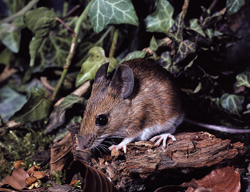
Hantavirus Pulmonary Syndrome (HPS)
HPS mostly affects adults, but the age of people who develop HPS has ranged from 10 to 75 years. HPS affects both sexes, although males are at a slightly higher risk of developing the illness (61% male, 39% female). 77% of the people with HPS have been white, 20% have been American Indian, 2% have been African-American, and 1% have been Asian. Most people who develop HPS either live in rural areas or have visited rural areas within 4 weeks before symptoms of the illness appear.
What is hantavirus pulmonary syndrome?

Hantavirus pulmonary syndrome (HPS) is a potentially fatal respiratory illness caused by a virus found in the saliva, urine, and droppings of some rodents. People can become infected with the virus by breathing contaminated dust; handling infected rodent saliva, urine, or droppings; or being bitten by an infected rodent.
Causes
In the US, most cases of HPS are caused by a single strain of hantavirus carried by the deer mouse. These mice are normally found in rural areas. Most people become infected by breathing in tiny airborne particles formed when infected deer mice urinate; coming into direct contact with infected rodent urine, saliva, or droppings; being exposed to dust particles contaminated with the virus; or being bitten by a rodent infected with the virus.
Symptoms
HPS symptoms usually begin from 1 to 5 weeks after exposure to the virus and usually last 3 to 5 days. Symptoms that almost always occur in the early stages of HPS are: fever, muscle pain, fatigue, headache, chills, nausea, vomiting, diarrhea, abdominal pain, dizziness, and feeling generally ill.
Treatment
The survival rate for this disease is 60% and the chances of survival go up by detecting the illness as early as possible. If you think you may have this disease you should see a doctor immediately. Usually patients will be put in an intensive care unit and many types of treatment options may be used. Patients will be assited with their breathing, be put on an IV, and have their heart and lungs monitored.